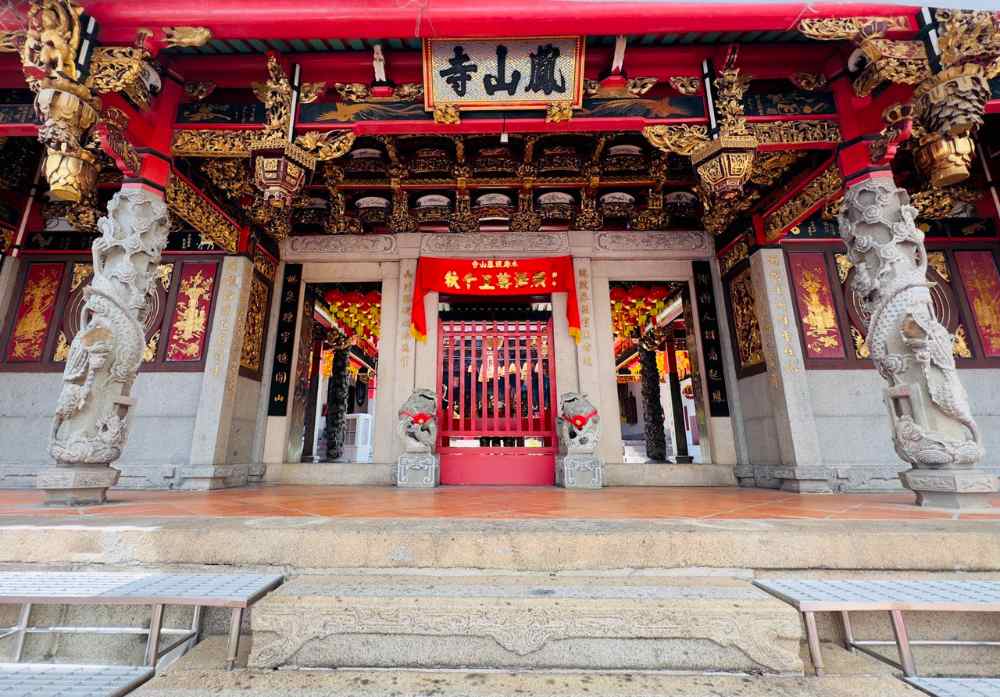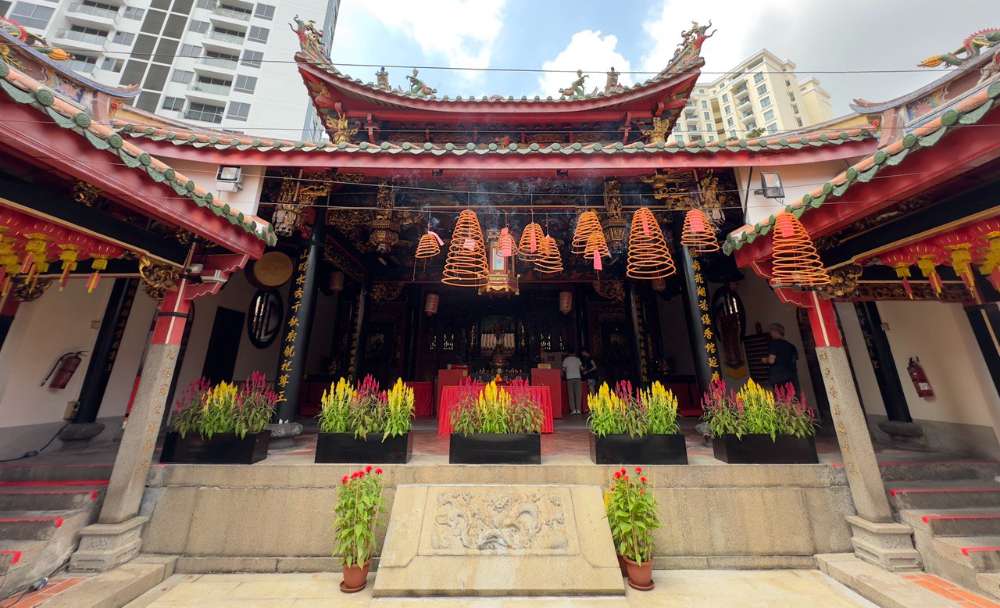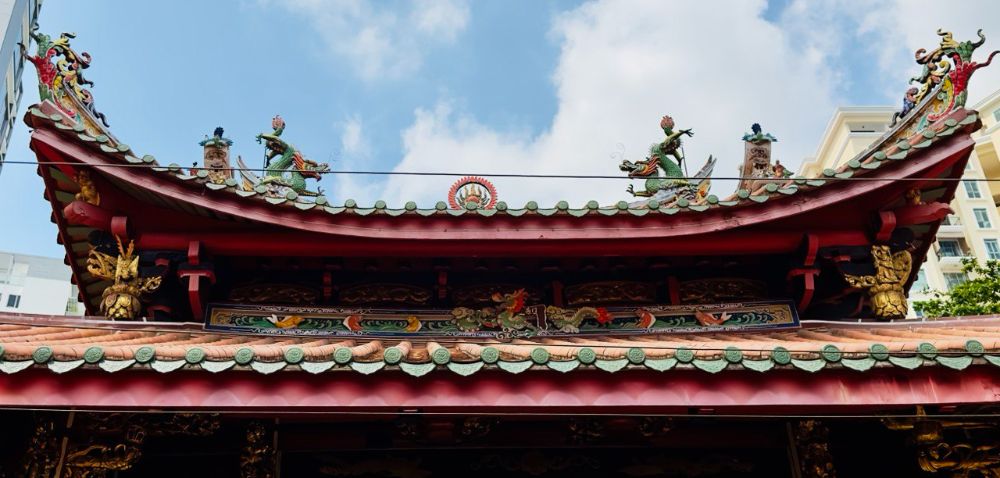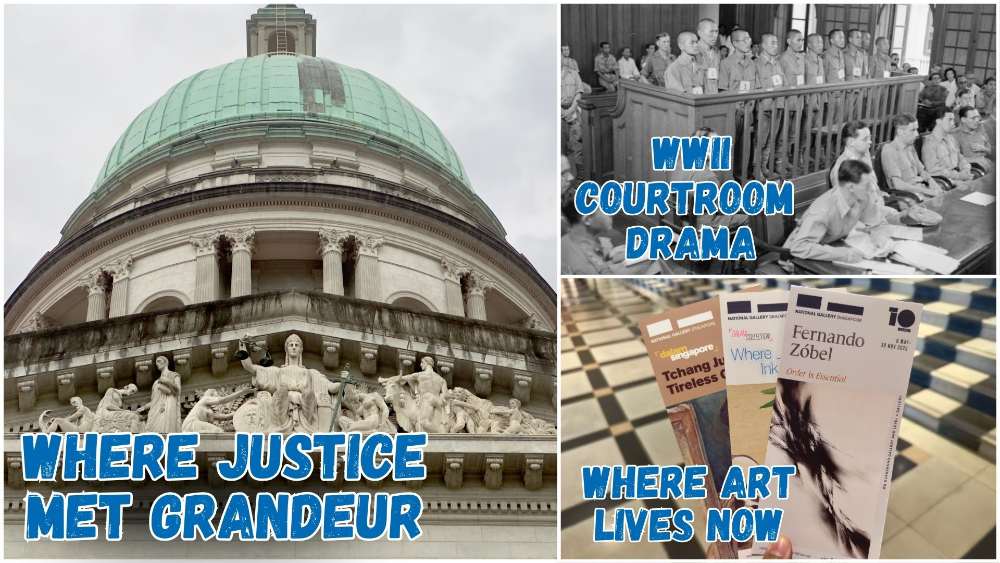National Monuments Of Singapore: Hong San See
What is a National Monument? Who gazettes them? How many national monuments are there in Singapore? To date, the Preservation of Sites and Monuments, a division of National Heritage Board, has identified and gazetted 75 buildings, structures and sites of national significance as an integral part of Singapore’s built heritage.
And we're here to tell you all about them - one National Monument at a time!
You've probably passed by or stepped into more than a few of them without realising they were National Monuments: Al-Abrar Mosque, Asian Civilisations Museum, the Civilian War Memorial, Saint Andrew's Cathedral, the Esplanade Park Memorials, Fort Siloso on Sentosa - no need to plan an itinerary for friends visiting from overseas; just show them this article ✌️
In this edition, we spotlight a Chinese temple that received the Award of Excellence in the annual UNESCO Asia-Pacific Heritage Awards for Cultural Heritage Conservation, Hong San See.
📍 Location
Hong San See was the 16th building to be gazetted as a National Monument. Located near another National Monument, Sri Thendayuthapani Temple, the MRT station nearest to Hong San See is Fort Canning.
📅 Significant dates
Dates built:
- 1836: The original Hong San See was built on Tras Street in Tanjong Pagar
- 1908-1913: The present Hong San See was constructed on Mohamed Sultan Road
Milestones:
- 1907: The colonial government then evicted the original temple from Tras Street, compensating its trustees accordingly
- 1915-1925: Nan Ming School was started within the temple grounds, but closed due to financial difficulties
- 1924: The temple has been managed by the Singapore Lam Ann Association, a Hokkien clan group
- 2006-2009: The temple underwent a full scale restoration, and in 2010, received the Award of Excellence in the annual UNESCO Asia-Pacific Heritage Awards for Cultural Heritage Conservation
Date gazetted: 10 Nov 1978
📜 History
Led by Neo Lim Kwee (梁壬癸), a group of Hokkien pioneers from Nan’an, Fujian province, established and constructed the original Hong San See (which means "Temple on Phoenix Hill") on Tras Street in Tanjong Pagar in 1836. He was the father of Neo Chan Guan (梁赞元), a founding member of Keng Teck Whay.
Hong San See, which shares the same name as its parent temple in Nan’an, also served as a social centre for early immigrants from Nan’an to mingle and seek help.
In 1907, the colonial government acquired the temple’s land for road widening, and offered its trustees a sum of money as compensation. With the money, the trustees then obtained a new site on Mohamed Sultan Road and constructed the present Hong San See between 1908 and 1913.
Lim Loh (林路), a well-known building contractor at the time, also known by not one but two monikers – Lim Chee Gee (林志义) and Lim Hoon Leong (林云龙) – was appointed to design and supervise the construction project. His son Lim Bo Seng (林谋盛) would later come to be recognised as Singapore’s war hero during the Second World War; a memorial was erected in his honour.
 IMAGE: NG KAI
IMAGE: NG KAI
In 1915, the temple housed a school within its compound, Nan Ming School (南明学校). It operated in the side halls and catered mainly to the children from nearby villages, such as Bukit Ho Swee. However, due to financial difficulties, the school closed down just 10 years later, in 1925.
 IMAGE: NG KAI
IMAGE: NG KAI
The chief deity worshipped in the temple is Guang Ze Zun Wang (广泽尊王). According to later records, his lay name was Guo Zhongfu (郭忠福) or Guo Hongfu (郭洪福), born during the Later Tang Dynasty (923-937). Though his birthplace of Xiao Xi Chang (小溪场) was part of Anxi County since 955, it was under the administration of Nan’an County in his lifetime. Hence, he remains most closely associated with Nan’an County, and the temple (Feng Shan Si, after which Singapore’s Hong San See is named) which was erected in honour of him and his descendants is located there.
Other deities enshrined in the temple include Cheng Huang (城隍, "Town Deity"), Xuan Tian Shang Di (玄天上帝, "Heavenly Emperor"), and Guan Yin (观音, commonly known as the "Goddess of Mercy").
 IMAGE: NG KAI
IMAGE: NG KAI
📐 Design and architecture
Hong San See is designed in the traditional Hokkien architectural style by Lim Loh. The style’s most outstanding features include the curved ridges on the roofs with prominent upturned “swallow-tail” end sweeps. The temple originally overlooked the sea, but high-rise buildings constructed in the area over the years have blocked the view.
 IMAGE: NG KAI
IMAGE: NG KAI
The roofs are also richly decorated with various carvings and sculptures. These decorations were made with a special technique called jian nian (剪粘, “cut and paste”), whereby colourful ceramics were carefully cut and trimmed into smaller fragments, before being pieced together to form colourful mosaic figures.
Similar works of art can be found in other Chinese temples in Singapore, including Thian Hock Keng, Yueh Hai Ching Temple, Tan Si Chong Su, and Lian Shan Shuang Lin Monastery.
On the roof ridge of the entrance hall is a hu lu (“bottle gourd”) flanked by a pair of dancing dragons. The dancing dragon figures symbolise justice, power, and prosperity, while the hu lu is believed to ward off evil spirits. Another two dragons sit on either side of a blazing pearl on the roof ridge of the main hall. The pearl symbolises the celestial power of the heavenly gods.
Speaking of dragons, usher in the Lunar New Year of the Dragon by checking out our piece, "Dragons In Our Midst: Mythical Beasts Around Our Little Red Dot".
🕖 Opening hours
Regular visiting hours are from 8am to 5pm daily.
🎟️ Admission
Entry is free.
For the latest updates on Wonderwall.sg, be sure to follow us on TikTok, Telegram, Instagram, and Facebook. If you have a story idea for us, email us at [email protected].









